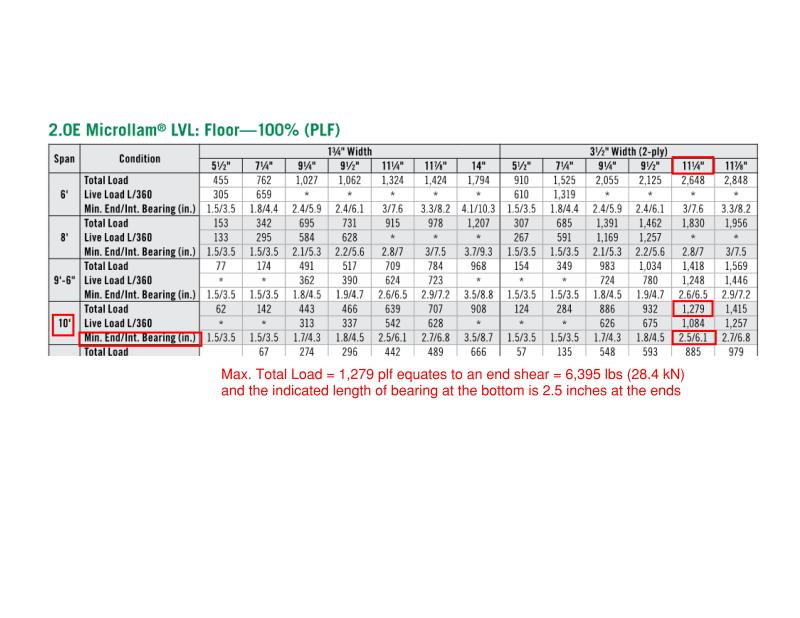Everynameistaken
Structural
Hello,
I am working on a residential interior load bearing wall removal. We typically work on larger industrial projects so this is a little different for me!
I have sized the LVL beam (3 1/2" x 11 1/4") for a trib width of 13' and span of just over 10', the beam shear/reaction load in almost 40 kN! So to support this I have a built-up post below the beam (jack studs?) of 4 - 2x4 nailed together.
The LVL beam will be hard up against the top plate which will remain and I am putting a 2x4 onto of the lvl to toe nail into the plate for lateral support along the beam length.
My question is at each end of the LVL beam I currently have one new king stud, this stud is nailed to the built up post and into the end grain of the LVL. DO i need more than one new king stud at each end of the beam??
Thanks
I am working on a residential interior load bearing wall removal. We typically work on larger industrial projects so this is a little different for me!
I have sized the LVL beam (3 1/2" x 11 1/4") for a trib width of 13' and span of just over 10', the beam shear/reaction load in almost 40 kN! So to support this I have a built-up post below the beam (jack studs?) of 4 - 2x4 nailed together.
The LVL beam will be hard up against the top plate which will remain and I am putting a 2x4 onto of the lvl to toe nail into the plate for lateral support along the beam length.
My question is at each end of the LVL beam I currently have one new king stud, this stud is nailed to the built up post and into the end grain of the LVL. DO i need more than one new king stud at each end of the beam??
Thanks

